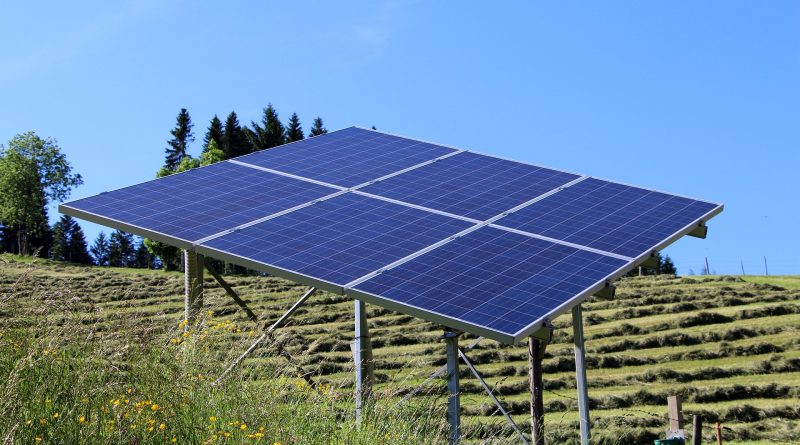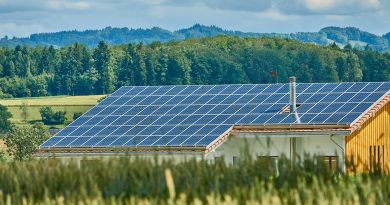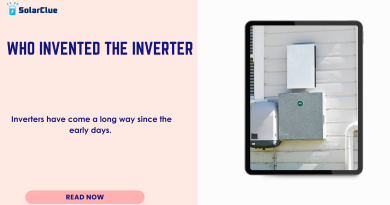Grid-Connected PV System: Maximizing Solar Efficiency
In recent years, there has been a significant rise in the adoption of grid-connected photovoltaic (PV) systems. These systems utilize solar energy to generate electricity and feed it back into the grid. This innovative technology has numerous benefits, including environmental sustainability, cost savings, and energy independence. In this blog, we will explore the working principle of grid-connected PV systems, their components, and the advantages they offer.
Table of Contents
Components of a Grid-Connected PV System:
A grid-connected PV system comprises several key components that work together to generate and supply electricity. These components include solar panels, an inverter, a bi-directional meter, and the utility grid.
1. Solar Panels:
The foundation of any PV system is the solar panels, also known as photovoltaic modules. These panels consist of multiple solar cells that convert sunlight into direct current (DC) electricity. The efficiency of solar panels has significantly improved in recent years, making them a reliable and cost-effective source of energy.
2. Inverter:
The DC electricity generated by solar panels must be converted into alternating current (AC) to be compatible with the electrical systems in our homes and businesses. This is where inverters come into play. They convert the DC electricity into AC electricity, making it ready for use or export to the grid.
3. Bi-Directional Meter:
To monitor the flow of electricity between the PV system and the grid, a bi-directional meter is installed. This meter measures the amount of electricity consumed from the grid and the excess electricity exported back to the grid. It enables homeowners or businesses to receive credit for the surplus electricity they produce.
Working Principle of Grid-Connected PV Systems:
Grid-connected PV systems operate by taking advantage of the sun’s energy during the day and utilizing the grid’s infrastructure when necessary. Let’s explore the working principle of this system in three simple steps:
1. Solar Energy Generation:
During daylight hours, solar panels absorb sunlight and convert it into DC electricity. The more sunlight the panels receive, the more electricity they generate. This is why it is crucial to install solar panels in locations with optimum sun exposure and minimal shading.
2. Conversion to AC Electricity:
The DC electricity generated by the solar panels is fed into the inverter, which converts it into AC electricity. This AC electricity can be used to power appliances, lighting, and other electrical loads within the premises.
3. Supplying Electricity to the Grid:
Any excess electricity produced by the grid-connected PV system that is not consumed immediately within the premises is fed back into the grid through the bi-directional meter. The surplus electricity is then available for others to use and helps offset the energy consumption of the premises during periods of low solar energy generation, such as at night.
Advantages of Grid-Connected PV Systems:
Grid-connected PV systems offer a wide range of benefits, making them an attractive choice for homeowners and businesses alike. Let’s explore some of these advantages:
1. Environmental Sustainability:
By harnessing solar energy, grid-connected PV systems help reduce greenhouse gas emissions and dependence on fossil fuels. They contribute to a greener and more sustainable future, helping to combat climate change.
2. Cost Savings:
Grid-connected PV systems enable homeowners and businesses to generate their own electricity, reducing their reliance on conventional power sources. This results in significant cost savings on energy bills over the system’s lifetime. Additionally, some countries offer financial incentives, such as feed-in tariffs or tax credits, to encourage the adoption of renewable energy systems.
3. Energy Independence:
With a grid-connected PV system, you become less reliant on the grid for your electricity needs. During power outages or disruptions, the system can still function and provide power to essential loads, ensuring a continuous energy supply.
Conclusion
Join the revolution in electricity generation with SolarClue®’s grid-connected PV systems. These systems are transforming the way we consume energy by offering a multitude of benefits, including environmental sustainability, substantial cost savings, and enhanced energy independence. By harnessing the power of the sun, these systems not only reduce our carbon footprint but also provide a reliable and renewable source of energy. As technology continues to advance, SolarClue®’s grid-connected PV systems stand at the forefront, playing a crucial role in shaping a cleaner and more sustainable energy future. Take the first step towards this future with SolarClue®.
Frequently Asked Questions
A Grid-Connected PV (photovoltaic) System is a solar power setup that is connected to the electrical grid, allowing for the generation of electricity from sunlight.
By being connected to the grid, excess energy generated by the system can be fed back, reducing dependence on the grid and optimizing overall efficiency.
Key components include solar panels, inverters, mounting structures, and grid connection equipment.
Solar panels capture sunlight and convert it into electricity, providing a clean and renewable energy source.
Inverters convert DC electricity generated by solar panels into AC electricity, ensuring compatibility with the grid and efficient energy use.
No, grid-connected systems are designed to shut down during outages to ensure the safety of utility workers.
Excess energy can be fed back into the grid, allowing users to receive credits or compensation for the surplus electricity through net metering programs.
Optimizing the system’s orientation, tilt, and selecting high-efficiency solar panels are critical design considerations for maximizing solar efficiency.
Users benefit from reduced electricity bills, potential income from excess energy sales, and the environmental advantages of clean energy generation.
These systems contribute by reducing reliance on conventional energy sources, lowering carbon emissions, and promoting a more sustainable and resilient energy grid.




